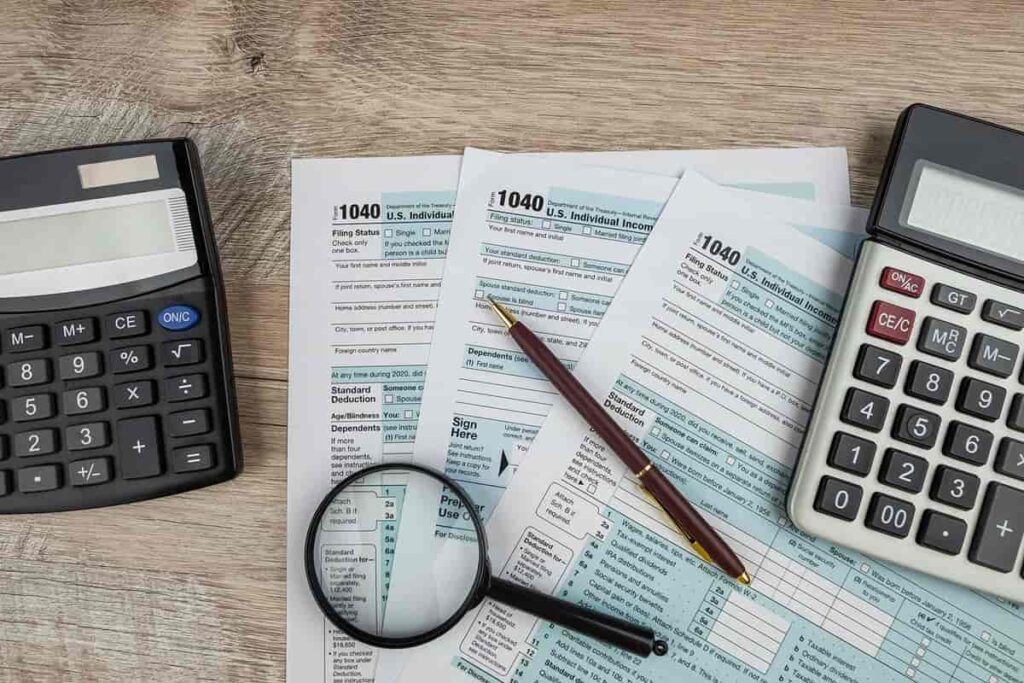Investing in 2023: It’s All About Managing Risk
Table of contents

“Do you think you could write an article on investing in 2023? We’ve hit the first prolonged bear market in more than a decade, and I know many, like myself, would find it valuable to understand the unique opportunities this presents as we begin to deploy our capital.” Those are the words of a lucky person who has capital to deploy right now, and many subscribers are beginning to pursue variations of our tech and dividend growth strategies. It’s a great time to be investing. Many who pay our bills have asked for our thoughts on investing going into 2023, so that’s what we’re going to focus on today.
We never tell investors what to do because we’re not running a welfare program. Instead, we teach a man to fish, and he can eat for the rest of his life. We share our own investment decisions and supplement those with a living methodology document that changes in response to the environment. As the bear market continues to wreak havoc, here are some things for investors to think about.
45 to Retirement Age with Capital Deployed
We’re assuming that up until the age of 45 at the earliest, most people will be gainfully employed with discretionary income to invest. When you decide to stop working, you’ll likely have most of your capital deployed across multiple asset classes. That’s our situation, and one of these allocations is the 38-stock Nanalyze portfolio with upwards of 10% in cash left to deploy. The rest of our assets are allocated as follows:

Our dividend growth investing (DGI) strategy – Quantigence – has performed remarkably well. Not only has our income increased, but our portfolio value is the same as it was at the beginning of 2022 – when the bear market started. Strong performance in commodities – Exxon (XOM), Chevron (CVX), and Archer-Daniels-Midland (ADM) – helped offset losses in other areas. Investors who find such a strategy too risky can simply substitute passive low-fee ETFs in place of a DGI stock portfolio. If you choose to build your own DGI portfolio, always consider industry diversification which helps dull the impact of a bear market.
The asset pool we manage is fixed, which means our only liquidity comes from:
- Cash resulting from M&A events (i.e. Blue Prism being acquired)
- Cash from trimming portfolio overweights (NVIDIA)
- Cash from trimming hyped themes (i.e. gene editing)
M&A events are self-explanatory. Regarding trimming, we usually watch positions exceed 11% and then start trimming down to 10%. Sometimes stocks in a particular theme will skyrocket as a group (a sure sign of hype), and we’ll take some profits off the table. Having your capital already allocated means less opportunity to take advantage of bear markets. But for people with capital to deploy every month, you couldn’t be investing at a more opportune time.
18 to 65 With Monthly Income
Three words are extremely relevant here – discretionary monthly income. If you are living hand-to-mouth, it will be tough to save money every month. Education and hustle will get you places in developed markets where nobody is holding you back, regardless of what the propaganda machine says. Once you’re making a decent income, live as far below your means as possible. Drive a used Toyota. Stop buying Starbucks. Eradicate as many “subscriptions” as possible. Once you have a fixed amount of money to save every month, invest it all in your own strategy. Get an Excel spreadsheet and organize your assets holistically. Take advantage of the fact that you no longer have transaction fees to worry about.
Back when we were building our dividend growth portfolio, trading wasn’t free, and we expected to pay $8 a trade which adds up. Since we were buying 30 stocks a month, that was potentially $240 in transaction fees which we avoided using agents like Computershare or Wells Fargo Shareholder Services, both of which let you set up automatic purchases every month for free or a minimal amount. Today, you can buy 100 stocks a month – even fractional share amounts – and it costs nothing. Take advantage of that! For dividend growth stocks, we find it best to allocate a fixed amount across your entire portfolio and simply pull back on the positions that start to become too overweight because of normal stock price appreciation. The same holds true for a basket of ETFs.
For tech stocks which are inherently riskier, give yourself more leeway. Investing an equal amount across all 38 tech stocks we’re holding now would not make sense because each unique situation requires a different approach. We’re presently trimming an overweight NVIDIA position, so clearly, we wouldn’t add to it. A handful of positions we’re underwater 75% or more and we’ve stopped committing any capital to them because our pre-defined limit has been reached. Sounds horrible until you consider ARK’s flagship ETF is down 70% year-to-date (compared to a Nasdaq return of 30%). Funny how everyone’s just fine with volatility until it starts moving in the wrong direction.
The younger you are, the more risk you can handle. Young bucks might consider a 75% tech/growth stock allocation, while older gents might move that to 15%. Keep it simple and break things down into three buckets – safe (broad market ETFs) risky (tech/growth stocks), and alternatives for their diversification effect.

Someone recently asked why we invest in disruptive technology stocks instead of traditional growth stocks. Good question. We’re nerds at heart, and Nanalyze was founded based on a love for technology and a lack of objective information about just how tough it is to find pure-play stocks that have traction beyond just a story.
Managing Market Timing Risk
We’ve had many well-informed individuals make the argument that all investors are speculators. This flies in the face of our “be an investor, not a speculator” mantra. The difference between the two is duration. If you’re paying a lot more tax because your positions are being held less than a year, you’re likely a speculator. We almost never have this problem. The CFA Institute talks about those who take on a lot of market timing risk in their strategies will typically underperform because they’re not in the market when they need to be.
It entails higher transaction costs and commissions and includes a substantial opportunity cost. Market timers exit the market during periods of high volatility. Since most market upswings occur under volatile conditions, active investors miss out on the opportunities and ultimately earn less returns than buy-and-hold investors.
Credit: CFA Institute
Don’t try to be some Gordon Gekko because you’ll end up eroding your wealth over time.
Some have suggested we consider elements of technical analysis in our investment decisions. That’s not something we’d ever consider doing because we want to create the least amount of noise as possible. KISS – keep it simple stupid – is the foundation of everything we do. Our simple valuation ratio is a good example of keeping things simple. That said, some good questions have been raised. How do you know when to enter a stock? When do you exit?
Going Long a New Stock
Exiting we’ve already covered. So, let’s talk about buying stocks and market timing. Our approach is to use the simple valuation ratio (SVR) and set a basic cutoff. In the bull market, we wouldn’t touch anything over 40. Other subscribers set their cutoff at 20 and fared better. Today, we won’t invest in anything over 20. Snowflake (SNOW) is a good example of a stock that rarely falls to an SVR of 20 (knocks on wood). Pay less attention to arbitrary numbers we’ve set and more to the process behind having numbers of your own. These represent structure and inject some objectivity into the process which helps remove human emotion.
Adding to Existing Stocks
Many positions we entered prior to the bear market are understandably underwater. You won’t sleep well at night if you start sweating paper losses. Some argue that paper losses are losses. Our approach is to ignore them and focus on what transpires upon exiting a position – when alpha is either captured or lost. We always set a limit on the maximum amount of capital we’ll invest which is “total portfolio value / n” where n equals the total number of stocks we’re holding. For stocks held prior to the bear market, we won’t add shares unless the price falls 50% or more below our cost basis. For new positions, we’ll add one-third of our target weighting size and then wait a while. (Target weighting is “1 / n” where n is the number of stocks you’re holding.) If the stock falls, we’re happy to be buying quality at a discount. If it goes up, we’re happy too.
Teaching a Man to Fish
We’ve articulated our approach to investing now, and into 2023. Nothing is more refreshing than hearing someone say, “I like some aspects of your approach but chose to do X/Y/Z differently.” That’s what we love to hear. Our methodology is living because we change it based on what we learn as we go along. Do the same. Everyone’s appetite for risk will differ based on their age, lifestyle, life choices, and opportunities. There is no one-size-fits-all investment strategy. Those who can invest money every month across their strategy will fare well.
Looking back on 2022, we did quite well. Year-to-date the Nasdaq was down 34%, the S&P down 20%, but our assets only retreated 7.2% from our high watermark.

It’s important to be diversified at an asset class level because it helps smooth out market volatility. Looking forward to 2023, it’s business as usual. With 38 stocks and a hard cap at 40, we’re being ultra selective about adding any more names. Our DGI portfolio is cooking right along, though we’re keeping a close eye on some names like VF Corporation and their suspiciously high 8% yield. It’s business as usual here at Nanalyze, and we’re sleeping well in this tumultuous bear market because we’re managing risk.
Conclusion
Generational wealth gets created during bear markets. Make sure you’re diversified across asset classes to buffer the effects of market volatility. Don’t fear paper losses. If you’re investing at regular intervals, you’re happy if stocks go down because you’re getting a better price. If they go up, you’re happy too. If you’ve done your due diligence and identified quality companies, there’s only one thing to do now. Buy the dip in 2023.
Sign up to our newsletter to get more of our great research delivered straight to your inbox!
Nanalyze Weekly includes useful insights written by our team of underpaid MBAs, research on new disruptive technology stocks flying under the radar, and summaries of our recent research. Always 100% free.














